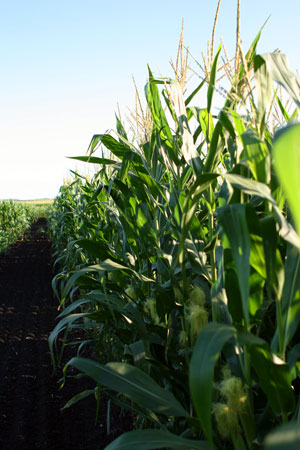By Michelle Werts
Every time I turned around this week, there seemed to be some new study, research or news related to forests, trees and flora that made me go, “That’s really interesting.” This made selecting a topic for today’s blog excessively difficult, so instead of selecting one, I selected four. Hope you find each of them as intriguing as I did.

Speaking Plants
According to a new study released this week by the University of Western Australia, it appears that plants, at least corn, use a series of clicking noises from their roots to communicate with one another. The research team recorded clicking noises in the 220Hz range (a range that humans can hear, too) made by the roots of young corn plants and then played similar sounds to corn plants whose roots were suspended in water. And the plants reacted, leaning toward the source of the sound. The implications of this information aren’t really known at this point, but the research team behind this study hopes to delve deeper into the connection between plants and sound.
They’re Alive!
Two trees that were thought to be extinct have been rediscovered in Africa. Erythrina Schliebenii and Karomia gigas were both feared extinct since the Erythrina’s last known habitat was cleared for a biofuel plantation in 2008 and the Karomia hadn’t been seen in recent years. However, in an expedition last year to try to discover if either of these species could still be found, botanists from the University of Dar es Salaam found both trees in a coastal forest in southeastern Tanzania. Of course, with such small populations, both trees are still under threat of extinction, but they’re alive and well for now.

The Coveted Green Jacket
The most famous golf event in the world tees off today in Augusta, Georgia, but while the golfers are aiming for the iconic green jacket bestowed upon the tournament’s winner, spectators on the grounds and viewers at home will be treated to one of the most picturesque sporting venues in the world:
- First, there’s Magnolia Lane, which leads into the course’s main clubhouse. It derives its name from the 60-plus magnolia trees that line the roadway. The magnolias were first planted back in the 1850s when the land was a plantation home.
- Then, there’s the Big Oak Tree, also planted in the 1850s. This large tree sits alongside Augusta’s clubhouse and provides a luxurious, shaded gathering place for spectators and golfers alike.
- Missing this year, though, will be the famed azaleas. An estimated 1,600 azalea bushes surround the course’s 13th hole, which is known as “Azalea.” But this year, thanks to the early spring, the bushes have already lost their bloom. So instead of witnessing the cacophony of brilliant colors during this year’s tournament, viewers will have to enjoy the greenery of the course’s Georgia pines.
I Scream!
Oh no! Vanilla production was way down in the last year thanks to bad crop yields, which means the price of vanilla is going up. This equals bad news for the pocketbooks of ice cream lovers everywhere.